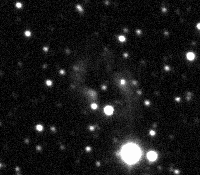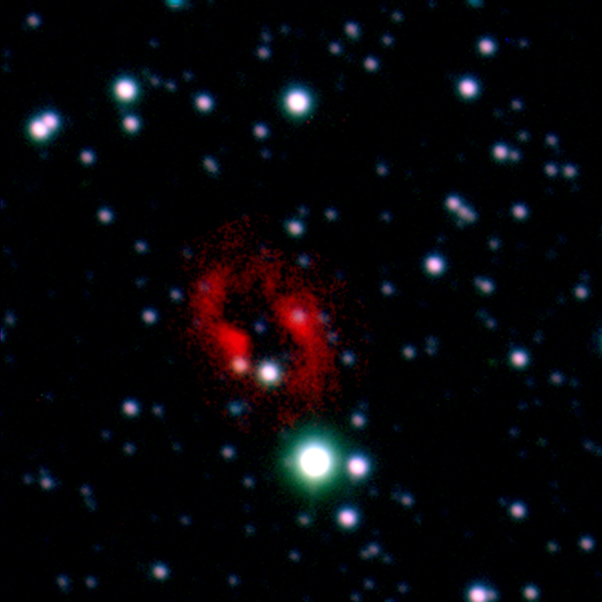[/caption]
The explosion of a binary star inside a planetary nebula has been detected, an event not witnessed for more than 100 years – and of course the astronomical equipment to observe such an event is much improved since a century ago. At the ends of their lives, before an all-encompassing supernova explosion, some stars undergo nova explosions, caused by nuclear reactions on their surface. Astronomers who detected the event predict that the combined mass of the two stars in the system may be high enough for the stars to eventually spiral into each other, triggering a much bigger double supernova explosion.
“The star which erupted was a nova, an event caused when matter is transferred from one star in a close binary system onto its companion, eventually triggering a runaway thermonuclear explosion,” said Roger Wesson, lead astronomer behind the discovery at University College London in England.
“In August 2007, one such exploding star was discovered in a part of the sky that had serendipitously been observed by us only a few weeks previously,” he said.
Images taken prior to the explosion (above) showed that this particular star was surrounded by a planetary nebula.
The photos were taken as part of the Isaac Newton Telescope Photometric HAlpha Survey (IPHAS), which is the first digital survey of the Milky Way in visible light and is being undertaken by an international collaboration of universities.
Now, the light flash from the explosion is passing through and illuminating the surrounding nebula, the study says.

Although several novae are discovered each year in our galaxy, only one previous nova has been seen to occur inside a planetary nebula – Nova Persei in 1901. The opportunity to watch in detail as the nova flash interacts with the nebula is a first in astronomy, said Wesson.
“The new nova, known as V458 Vulpeculae, provides an important test for models of how stars evolve,” he added. “The role of novae as potential future supernovae has thus far been difficult to analyse in detail, and so [this phenomenon] provides an opportunity to learn more about this aspect of stellar evolution.”
Source: University College of London


I don’t feel that this particular set of images is particularly well explained.
The last image seems a bit confusing…because i could see the other nearby object also varying its intensity… Can someone explain that sequence of images, please?
The apparent brightness of all the objects taken together will change as the exposure time would have been different between the images. The important thing is that the nova candidate flares up and becomes far brighter relative to the other objects in the image. In other words it has truely increased in luminosity. Also if you look carefully at the image you can see a cloudy haze surrounding the central nova. I assume that this is the planetary nebula, produced earlier in the star’s evolution. As in the future months the light travels through the nebula different sections will be illuminated at different times, effectively allowing the 3D structure to be disected.
At the ends of their lives, before an all-encompassing supernova explosion, some stars undergo nova explosions
I don’t think there’s any evidence that novae are the precursors of supernovae. While it’s entirely possible for a binary system that would eventually produce a type Ia supernova to experience nova events before it suffers a deflagration event, that doesn’t mean that these are the only binary systems that can generate novae.
“A Planetary Nebula around Nova V 458 Vulpecula undergoing flash ionization” published by R. Wesson et al can be found at http://arxiv.org/abs/0810.0401 and was published on 10-2-08 and rather simply explains the physics of this object & the nova event. Additional images by these researchers can be found at http://zuserver2.star.ucl.ac.uk/~rwesson/novavul/. Additional Xray observations by Suzaku by Tsujimoto, M et al were published 10-17-08 and can be found at http://arxiv.org/abs/0810.3077. This peculiar system will be sure to generate interest by astronomers studying both Planetary Nebulae & Novae specialists in the months and years to come. What a fortuitous time for this unusual event to occur! I believe the correct & current desgnation for the PN is PN G58.63-03.62 based on galactic coordinates given in the first paper mentioned above.